Introduction
The Batis 25mm f2 was one of the original two Batis lenses Zeiss released; but it remains the only fixed 24mm class lens that is available in E mount. It’s not cheap, so how does it perform and is it worth the money? That’s what this review may help you decide.
Sample Images
Most of the images in this review can be seen in high resolution here
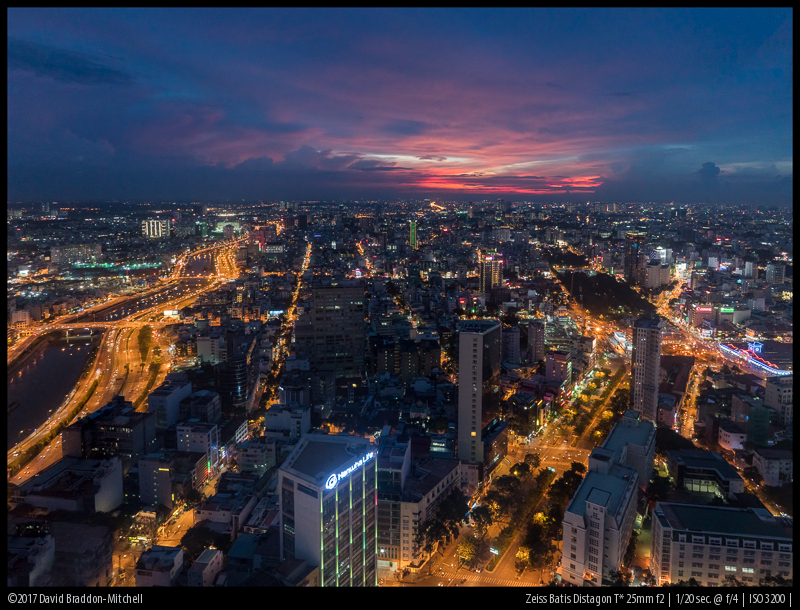
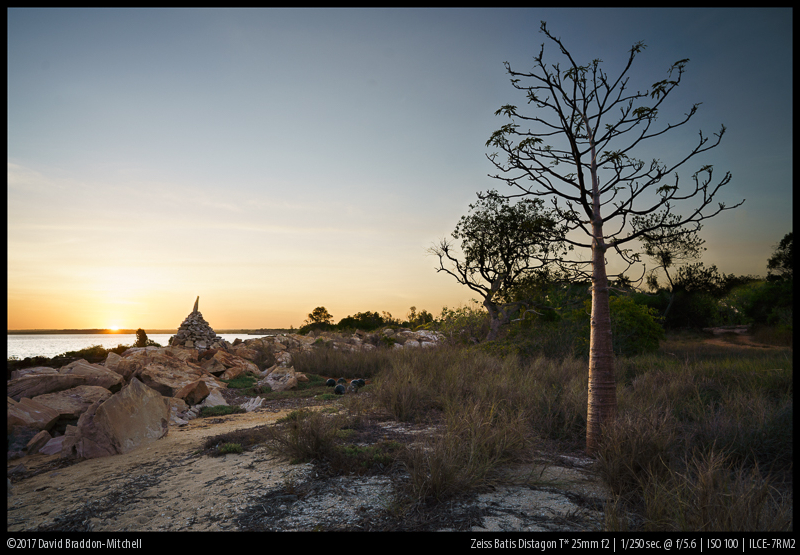
Haptics and Build Quality
The lens is remarkably light, though not exactly small. Like other Batis lenses it has an external metal shell of durably anodised aluminium. I have never seen the finish wear off of a Batis, which cannot be said for most of the Sony lenses with a metal shell. Presumably the internal components other than the glass are a mixture of metal and composite. This keeps the weight down, and for all we can tell, may be the most durable construction technique. Some folks, though, associate build quality with the heft of a heavier lens.
The focussing ring is rubber, which is nice on bare fingers but is a little difficult to locate if you are wearing gloves. There is no MF button, nor is there any other programmable button as we are seeing on the newer Sony lenses. Like other Batis lenses it has an OLED distance scale and depth of field scale. I find DOF scales pretty useless regardless of their accuracy, since it’s a matter of opinion whether the degree of sharpness at the ends of the zone is acceptable or not. The distance scale, while not perfectly accurate, is useful enough. It is possible to set infinity focus accurately by focussing from a closer distance to infinity, and stopping as soon as the infinity sign appears (if you keep going it will still say infinity, but it will focus past infinity).
I’ll often call this lens a 24 mm class lens. With distortion correction turned off I’m guessing it’s a bit shorter than 24mm; with it turned on the angle of view is closer to a 24mm lens than 25. It’s probably called 25 just because Zeiss has a tradition of calling its lenses in this range 25mm.
Resolution
The lens is sharp in the centre and midfield, and indeed quite a way out towards the edges, from wide open. Wide open performance at infinity, though, is a bit marred by axial chromatic aberration. The extreme corners wide open are a little soft, but not useless. By f2.8 the extreme corners are quite good, and the centre and midfield almost as good as it gets! By f4 it’s pretty much sharp across the field, perhaps a touch better at f5.6 but you would never notice in a full image, and diffraction just starting to dull the image down by f8. I cannot detect any field curvature at infinity. It makes no difference where you focus. This is pretty remarkable performance for a 24mm class lens.
Here is the overall image from which the crops are drawn:
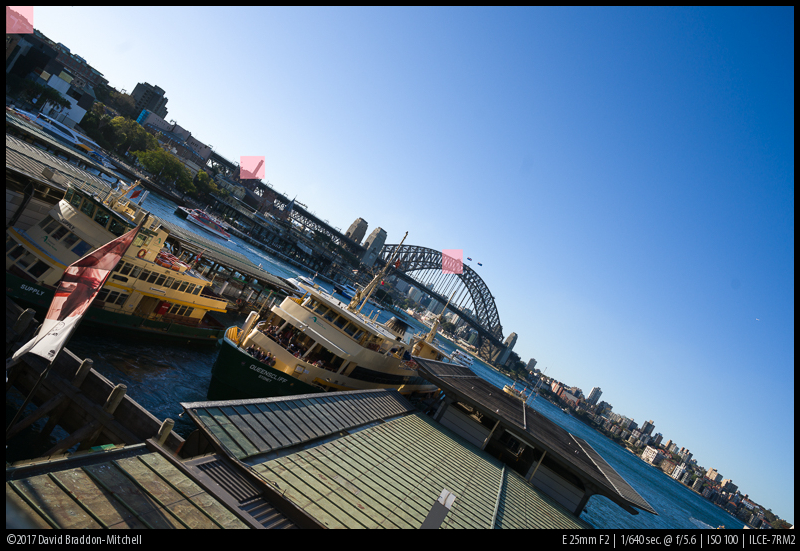
Bokeh
One of the principal reasons you might prefer a moderately fast prime over a zoom that covers this range, is the opportunity to take images with a thin depth of field. The bokeh is in fact very good on the lens. Here is an aperture series with a fairly close subject an a relatively distant background. The branches in the background form one of the most difficult patterns for nice bokeh – a classic torture test. Despite this, the lens performs well. Since it’s sharp in the focal plane even at f2 the subject is snappy, and this contrasts nicely with the quite decent bokeh (for such a demanding situation). The overall performance is actually much better than other 24mm lenses at this aperture.
Here is an aperture/bokeh series with a more ‘normal’ outdoor background, with elements at different distances. In this context the bokeh is wonderfully smooth.
Chromatic Aberration
Chromatic aberration is the weakest point of this lens—largely axial CA and spherochromatism. Having said that, it is no weaker than any other fast 24mm class lens that I know of. Lateral CA is fixed largely losslessly, and I did not develop the files in a crude RAW converter that disables that.
Here is a torture test: backlit water droplets. Only the finest APO lenses show little or no LoCA in such tests. Probably the only wideangle lens that would be in that class is the 1.4/28 Otus APO-Distagon (though neither I, nor I think the rest of the team, have ever laid hands on one).
As you can see the CA is quite strong at f2, a little less strong but not much at f2.8, but cleans up almost completely at f4. Smaller apertures show further improvements.
To get a sense of how the axial CA at infinity cleans up, here is a 100% crop from the resolution series, comparing f2 and f2.8 in terms of CA. In the backlit water torture, f2.8 was still showing axial CA and spherochromatism. Here though,the fairly strong CA at infinity cleans up one stop down. Before is f2, after is f2.8.
These are both very demanding tests. Here’s a sample image taken at f2 featuring one branch of sharp blossom, and most of the rest of the image is largely bokeh. No defringing has been used, and yet the image is not spoiled by the CA. So F2 is a genuinely viable aperture for images where you want thin DOF.
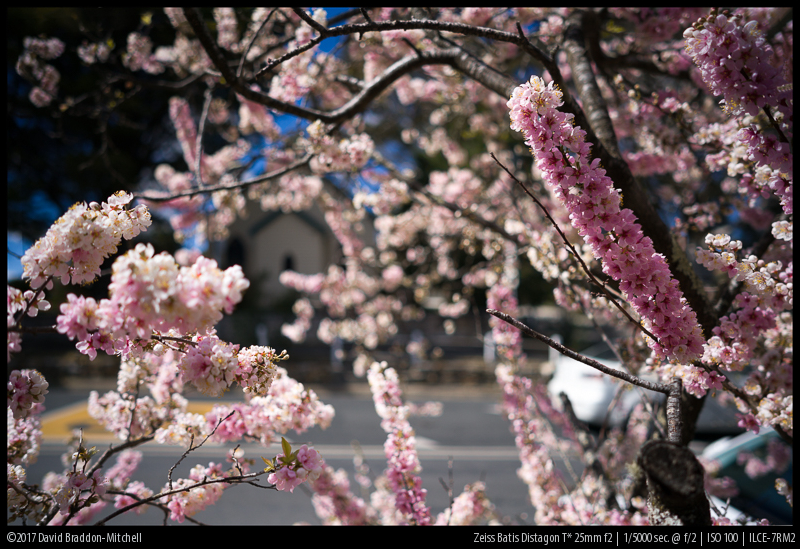
Vignetting
The lens has a profile that can be enabled in camera or in your favourite. However I’ve turned all correction off to produce this matrix of images to give you an idea of what uncorrected vignetting looks like at f2 – 5.6 (left to right, up and down). The worst case wide open is about 2.7 stops.
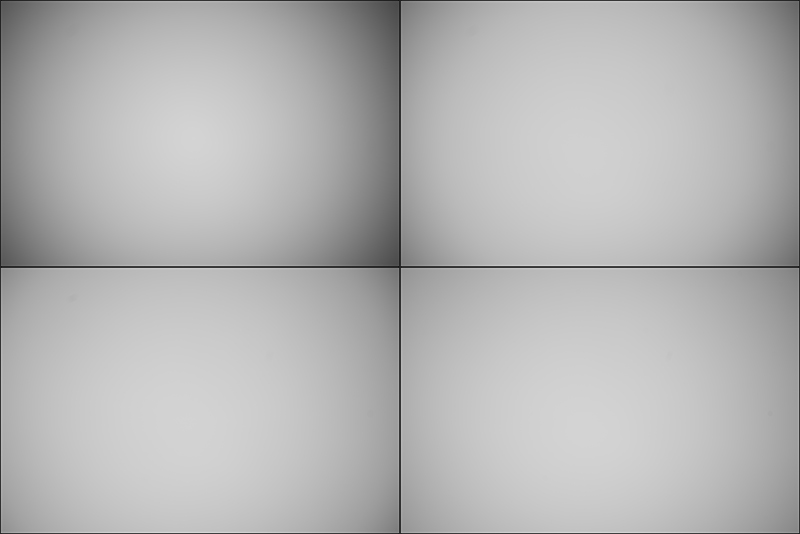
Alternatives
There are no direct alternatives: i.e. native 24mm-class fast primes. But there are three classes of alternatives I’ll discuss briefly: classic 24mm lenses, native zooms, and native lenses in a similar focal length.
In this section and the conclusion, there are some affiliate links to a few select products most central to the review. We have not turned every mention of a lens into a link to try to make you buy something, and there are no affiliate links except where we explicitly say. If we have helped you make up your mind, and you buy via our links, it costs you no more and gives us a small contribution to running the site.
In this alternatives section I will sometimes make comparisons with lenses I have not tested personally. Feel free to ignore such comments. However in every case they are based either on tests by others in the team, or by testers I have come to trust, rather than random internet reviews.
Classic 24mm lenses
The Canon 24mm FD f2.8 is inexpensive, and pretty sharp stopped down. It is not comparable at wider apertures, and does not have the contrast or flare resistance. But for someone looking for a cheap way into the focal length it’s not a bad buy. Philip reviewed it at https://phillipreeve.net/blog/review-canon-new-fd-24mm-12-8/. You can buy it via our affiliate link on eBay here
The OM Zuiko 24mm f2.8 is quite good too, especially later multicoated copies. This is the only classic 24 I have experience with, and barring the extreme corners, it performs well. Like the FD though it’s in every respect worse than the Batis, but also a tenth of the price. It can be had via our affiliate link on eBay here
The ultimate classic lens is the Zeiss Distagon T* 25mm f2 ZF2/ZE. This for a long time was the king of the 24mm class lenses. I have used it, and it performs very well indeed, and I could not say without a direct comparison if it is better or worse than the Batis. Published tests and most users I respect say the Batis is a little better, though. The classic Distagon may not, however, be a good choice on other grounds. It’s not cheap by any means, it doesn’t have AF if that matters to you, and even before you add an adapter it is large and heavy with no compensating performance gain. Also, as a lens with floating elements, adapter precision is important.
There are many other classic 24s from Nikon, Canon, Minolta and so on, and if any can be got cheaply and you enjoy using these lenses the are worth investigating. Remember, though, that this is a focal length where modern designs do perform very much better.
Zooms
All of the Sony zooms that include 24mm perform well at 24-25mm with the exception of the 24-70 f4 ZA zoom, which never gets sharp in the outer field at 24mm. All three ultra wide zooms – the 12-24, 16-35 f4 and GM 16-35 f2.8 have good performance at 24mm in every case, I suspect, exceeding classic primes. Of these the weakest at 24 is probably the 12-24 which is at its weakest point at this focal length, though even there is fine with a bit of stopping down. The GM 24-70 f2.8 (review by Jannik here) performs as well as the best of them at 24mm.
I have not performed close comparisons with any of these except for the 16-35 f4. The Batis is both notably contrastier, handles flare better, and is a little sharper especially in the outer field. I am guessing that there is a small performance premium against any of these. This is not a *mere* guess, but represents the opinion of trusted correspondents who have done such tests.
However as I said the zooms perform well at 24mm, and your decision is really likely to be about what you need. Do you want f2 for bokeh work? You have no choice in a native lens (and classic f2 24s are really not great at f2). Do you prefer a light prime lens, at the expense of the convenience of not having to change lenses, or being confined to one focal length. If you like zooms you are well served at 24mm. If you don’t, the Batis does add some special sauce.
Native Primes at Nearby Focal Lengths
There are two of these: the Zeiss Loxia Distagon 21mm f2.8, and the Sony FE 28mm f2.
The Loxia is, overall, a slightly better lens. It has nicer sunstars, it’s a little sharper, it has better control of CA. On the other hand it doesn’t have AF and it’s only f2.8. If I had to choose between these lenses I’d choose the Loxia, especially if landscape was my thing. But for environmental portraiture and similar work, the Batis might be a better bet with a friendlier focal length, f2 for separation, and AF (especially eye AF). Both are good enough that one should choose based on needs and preferences, rather than on bragging rights for absolute optical quality. If you are tempted by the Loxia you can buy it via our affiliate link at B&H Photo Video here
The Sony 28mm is a good budget choice. It sharpens up nicely on stopping down to f8 (with a bit of astigmatism still visible in the corners on my copy at least). It has a small but not useless area of sharpness wide open for environmental portraits. On the other hand it is overall a little less contrasty – especially at wide apertures. The area of sharpness is much smaller at wide apertures too, which can place restrictions on subject placement. Neither lens has great sunstars, but the Batis definitely has better ones. However the FE is a lot cheaper, and is a great value. The Sony 28mm can be purchased via our affiliate link at B&H Photo Video here
Conclusion
I recommend this lens. If you want a fast 24mm class lens, there is no alternative in native mount, and this is better than any I know of in any mount. I own the lens, have had it since fairly soon after it was released, and find it a very useful optic. If you like zooms, though, as I discussed above, you will get good performance from most of the Sony zooms at 25 mm. So you need to know that you need the bokeh possibilities, slight resolution and contrast advantages, handling advantages or perhaps flare advantages of the Batis prime.
Is there room for improvement? Well there always is with wideangle lenses. We have just reached the point where some longer lenses are essentially optically perfect for practical purposes. The Batis 2.8/135 and CV Macro APO-Lanthar 65 spring to mind as examples for the E mount. But we aren’t there with wideangles yet, so we still have some excitement to look forward to. Probably the best wide-angle lens at the moment other than the Otus 28 is the Loxia 21. But this lens is close, and if you want AF or a slightly narrower field of of view, you won’t do better than the Batis 2/25. You can buy it though our affiliate link at eBay here or B&H Photo Video here
Some More Samples

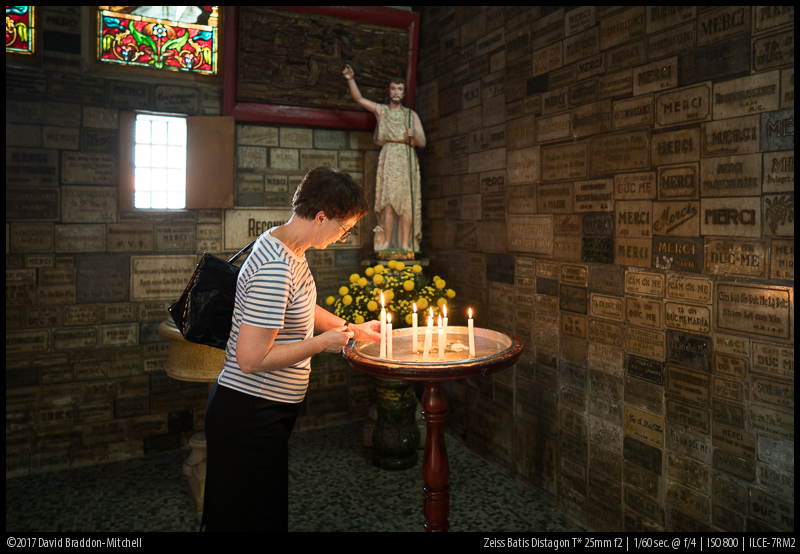
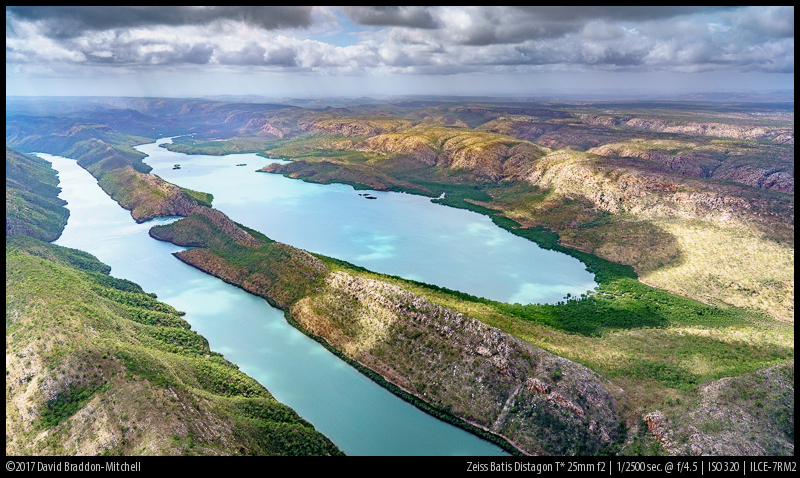
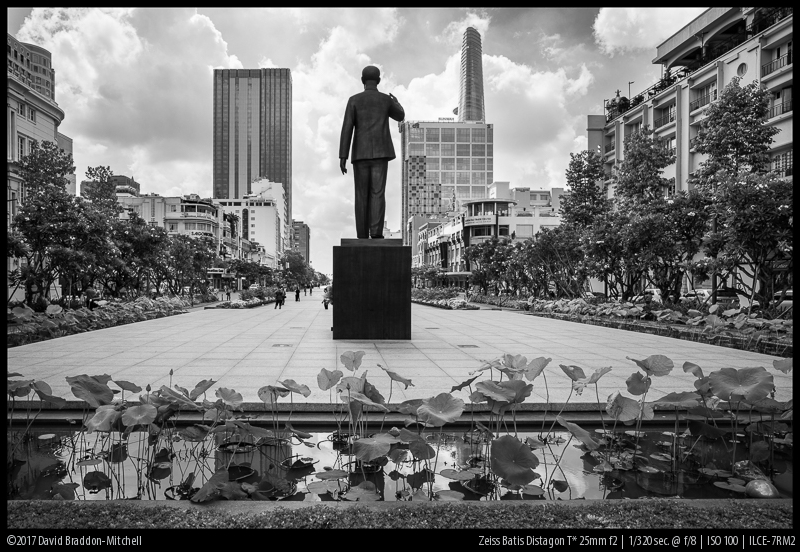
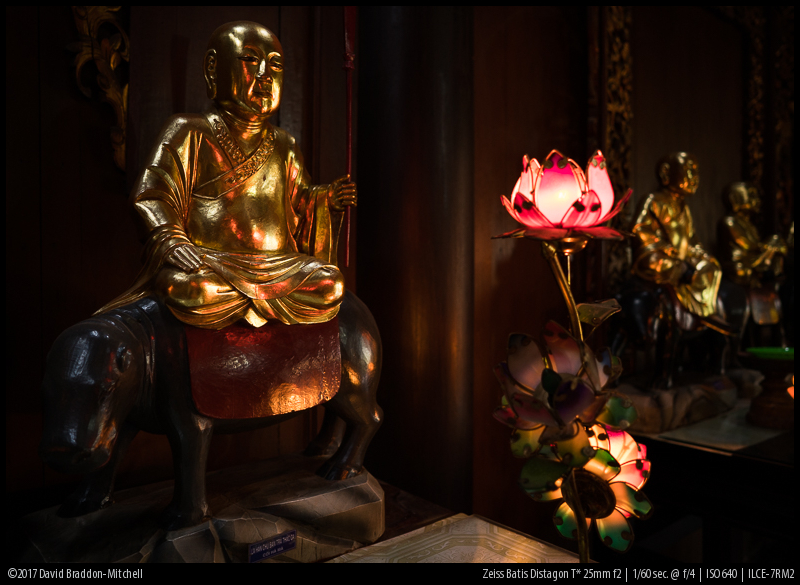
This site contains affiliate links. If you make a purchase using any of the links marked as affiliate links, I may receive a small commission at no additional cost to you. This helps support the creation of future content.
David Braddon-Mitchell
Latest posts by David Braddon-Mitchell (see all)
- Laowa FFii 90mm F2.8 CA-Dreamer Macro 2x: getting close! - August 21, 2022
- FLM Ballheads: a rediscovery - February 4, 2021
- Laowa 14mm f4 Detailed Review - December 31, 2020
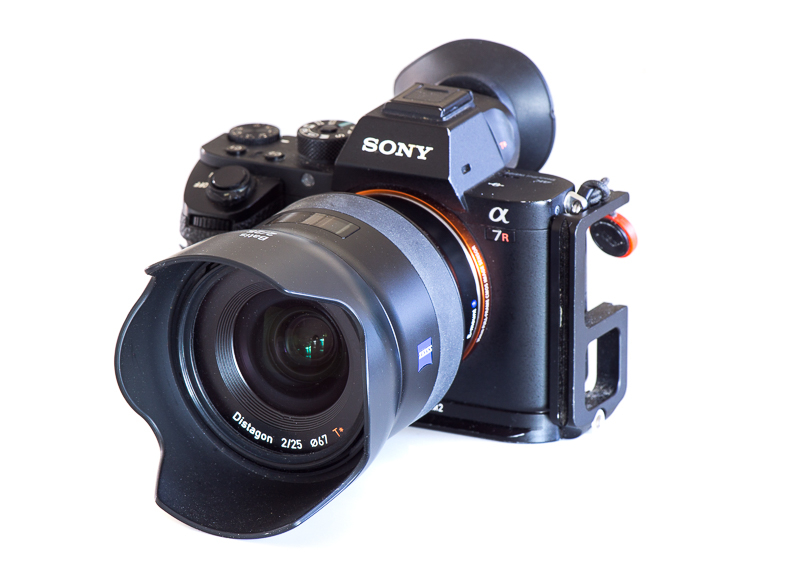

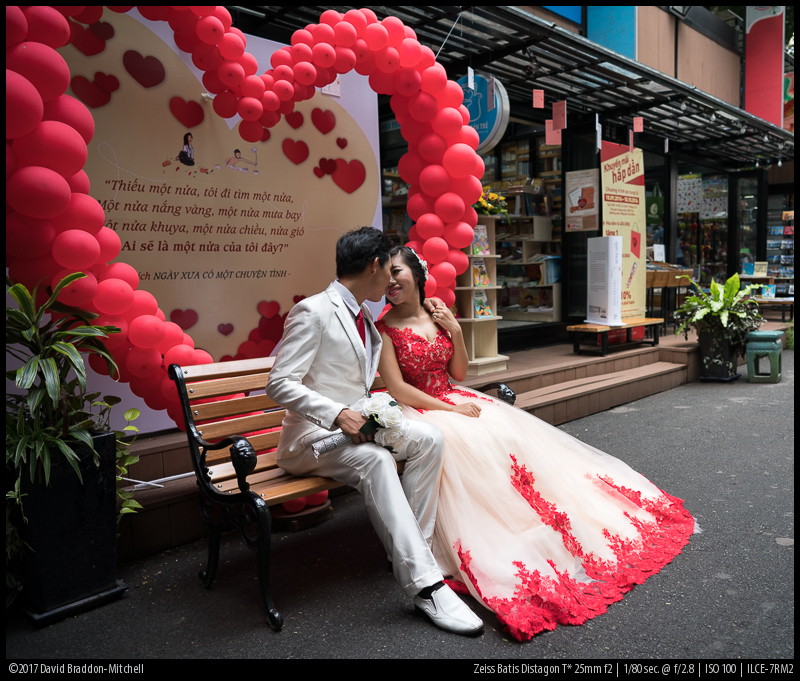
















Excellent review and thanks David. But what about the coma performance?
Coming….
Nehemiah, virtually none wide open. To be safe shoot at 2.8 and no issues.
I’d like to see crops. When you say none, is it better than the Batis, more like the sony 28 FE, or Nikon 20 1.8? In my experience, people have pretty different ideas about acceptable levels of performance.
LOL
What about the Samyang/Rokinon 24mm 1.4?
It’s a good lens, but I didn’t include any f1.4 glass in the comparisons. That’s a different order of specialisation, and we would need to consider the Canon Mk II and the latest Nikon at least. Of course the Samyang does come in E mount, but that’s basically just a permanently attached adapter.
Another great review. I really appreciate the balanced approach of this site to reviews and photography in general.
Thanks!
Hi,
Could you please review the old Nikkor 20mmf4 on Sony E mount system too?
I think it will be a beautiful “sunstar” and cheap lens. Maybe this is a cheaper option of Loxia 21mm for anyone want a wide angle lens with nice sunstar.
Thank you.
If we get our hands on one we give it a try!
Hey David, thx for your review. I apreciate every single test on this site. May it be, that you exchanged the pictures in the second Bokeh Test at aperture 4 and 5,6? Because the pic at 4 is less blurred as 5,6.
Many greetings from Berlin
Hi Karsten
Perhaps you saw a cached version?
You are absolutely right: that did happen, but I fixed it after someone pointed it out a bit before you. So it should be OK now.
thanks
Is it me or are the second set to Bokeh pics mixed up, F4 and first F5.6 and should the second F5.6 be an F8 ?
It’s not you!
I’ll fix it…..
thanks
Great review. One of the things you haven’t mentioned is the close focussing distance of this lens. At 0.2 meters with a magnification of 0.19x (and particularily with it’s pleasant bokeh) this lens is very useful for photographing objects at close distance e.g. flowers
Good stuff. Any thoughts on how this would perform for use in astrophotography?
Sorry what is “this”
Nice review. Appreciate the full range of testing.
By chance, I have this 25mm Batis as well as the 28mm Sony and the Olympus 24mm f/2.8 multicoated version. I’ve done tests and all three have similar (very high) sharpness at f/2.8 and f/4.0. The Sony is easily as sharp as the Batis in most situations but it has really huge distortion, so if you’re shooting video or anything that you want to use uncorrected, be prepared. (And the correction on that lens makes it slightly less wide, as well.) The Batis is overall the best lens but it’s really overly big for an f/2.0 24mm. (I had the old Olympus version of that and it’s a gem for size and density, though not terricially sharp, sad to say.) I have to add that the Nikon 14-24mm (using an adapter) is a very very close contender at 24mm in most ways, except that it’s huge and has no filter threads, of course. All of these tests were done on an A7r.
I usually read your review about lens… when search batis 25mm f2, i am so amazing to know you take some photos of Vietnam when review it. Love it!
Thanks! I had a wonderful time in Vietnam travelling with a friend, and hope to come back one day!
Looking forward to seeing how this stacks up to loxia 25 if/when you get it. Would also love to see milvus 25… a different class of lens but, well… I’d love to see how it stacks against the other two zeiss lenses
How’s about the sun star? You did not mention about it.
Your rating on Batis 2/25 seems too negative to me. To my experience this like the other Batis lenses are superb astro performers and belong to the leading edge. You can use the Batis lenses 18/25/85 fully open. Presently, I do not see other FE lenses at comparable that would reach their perfomance. Wich other lens do you rate over the Batis in terms of price/performance ratio? The Tokina Firin would be significantly cheaper ok, and I love it. Nevertheless, optically this nice lens is not on the outstanding Batis level and needs to be stopped down for comparable astro results.
From what I have seen so far (you can e.g. compare the lenstip coma results) the Batis looks no better in terms of coma correction to me than the Firin while costing more than double and being less wide. The 18mm 2.8 looks better wide open than the 25 stopped down to f/2.8. And then there is the cheap Sony 28mm 2.0 (which is said to be a bit wider than 28 and has no worse coma correction) for a fraction of the cost.
So no, I don’t really see a reason to get the 25mm Batis for this application.
I talk about more than one year extensive experience with Batis 25 and Firin 20. Both lenses are the most used astro lenses in my bag and really usefull and recommendable lesnese. Use depends on the scene. But they are definatively not on the same optical level.
I wonder about your poor rating for the outstanding Batis. As well I wonder, that you see the Batis on the level of the 400 bugs 28mm Sony.
Can you show images from your testing that underline your poor ratings for the Batis? Maybe, there is something wrong with your sample.
Can you share some full resolution samples? Would make your own standards abit clearer.
Bastian has linked and referenced well crafted reviews and shows his work.
I agree. Maybe I had a poor sample, but I could Not get rid of the Batis 25 fast enough. It has too much distortion for the price. I’m now using an old Minolta/Leica 24 2.8 that is superior in every way. The only downside is I have to use an A mount to E adaptor. If you want a Bat is make sure you shoot some tests with the lens you want to buy.
You copy was certainly defective then.
I am puzzled. Did you read my review? This was my rating:
“I recommend this lens. If you want a (moderately) fast 24mm class lens, there is no alternative in native mount, and this is better than any I know of in any mount.”
If you are talking about Astro use in particular, I didn’t test it for that particular application. I use B18 for that, which is a more useful FL for my (occasional) astro endeavours. But Lenstips reviews (amongst the best quantitative ones) put the coma performance as no better than Firin.
So it is an outstanding general lens, but for Astro in particular it is a more difficult decision.
And although it’s outstanding, it has been superseded for those who don’t need AF by the Loxia 25, which I now have and love. Better at f2.4 than Batis at 2.8, and even nicer bokeh (the Batis is nice for sure, but the Loxia is nicer). I am considering whether to keep the Batis for occasional AF use or not..
+1 on the sunstars: are they similar to the 18 mm Batis, i.e, ok but not great by your Loxia spoiled standards? 😉
Exactly!
If you need AF the Batis is great; it was the nicest moderate fast lens in this FL range I’d seen on any mount. But the Loxia 25 is just a bit better in every way: sharpness, contrast and bokeh. And a lot better for sunstars. And the speed difference doesn’t matter, because the Loxia has nicer bokeh (and apparently more, perhaps because it’s a touch longer) at f2.4 than the Batis at f2.
AF is not to be sneezed at, especially if it’s environmental portraits you are looking to take, and the Batis is a very fine lens indeed. But if you don’t need AF, get the Loxia.
Hello :),
Any word about this lens Vs Samyang 24 2.8 AF, that has been released recently, would be greatly appreciated :).
Regards.
No word, sadly. The Samyang is an interesting option, especially for hiking.
How does the Batis25 compare to the Sony 24mm F1.4 GM lens? That’s the question I‘m sure many people would like answered
Brauche einen kleinen Anstoß.
Voigtländer 21/3.5 oder Batis 25?
Brennweitenunterschied ist mir klar.
Bildqualität ist entscheidend!
In den meisten Fällen Batis 25.
Unfortunately you have struck perhaps the only team member who speaks very little German!
But if I have got it, you want to know how to choose between Batis 25 and CV 21 on the basis of image quality.
Actually I really don’t know. I would guess that at shared apertures (ie when the B25 is stopped down to f3.5) it’s a little ahead, being longer.
But none of us possesses both lenses to compare.
If IQ is everything in these focal lengths, I’d choose Loxia 25, though it is more expensive (or GM 25 if you want AF and fast apertures for portrait)
Between the B25 and CV21 I would choose not on IQ which is likely not too dissimilar, but on use case. Compact wide for hiking landscape with nice sunstars? CV. Slightly larger but still light for general use including travel, landscape, and environmental portrait with AF? Batis.
I would like to add that there is no better performing lens with AF in movies than this Batis. It is simply perfect, smooth as silk and cinematic. The C-AF tracking has a wonderful feel when switching between subjects like no other lens I have used on the FX3 or A7IV.
The Batis Series is super annoying > MF needs to be set on camera > does not have AF/MF switch !!!
I agree with you.